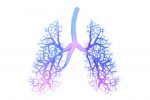Aria Reports Positive Preclinical Data for 2 New IPF Treatments

TXR-1002 and TXR-1007, two new therapeutic candidates for idiopathic pulmonary fibrosis (IPF) from Aria Pharmaceuticals, demonstrated significant efficacy at reducing tissue scarring and good tolerability in a mouse model of the disease.
Moreover, Aria said, the new artificial intelligence approach its researchers used in the lab to identify and test these compounds took just three months in total — “significantly faster than traditional drug discovery processes,” the company said in a press release.
Aria presented its preclinical findings on the two new experimental therapies at the 5th Annual IPF Summit 2021, held online Aug. 25–27.
“The in vivo data for TXR-1002 and TXR-1007 provide a strong rationale for advancing these promising candidates for the potential treatment of IPF,” said Anjali Pandey, PhD, senior vice president of nonclinical R&D and chemistry at Aria.
A hallmark of IPF is the excessive buildup of components of the extracellular matrix — a three-dimensional network of molecules and proteins, such as collagen, that provides support to surrounding cells.
This ongoing process leads to progressive thickening and stiffening of lung tissue, along with an inflammatory response, resulting in the formation of scar tissue (fibrosis) that makes it difficult for patients to breathe.
Although there is no cure for IPF, two approved therapies — Esbriet (pirfenidone) and Ofev (nintedanib) — can help ease its symptoms, slow disease progression, and improve patients’ quality of life.
“The chronic, progressive nature of IPF presents significant challenges for developing effective therapies,” said Martin Kolb, MD, PhD, director of the division of respirology at McMaster University, in Ontario, Canada.
“Currently approved therapies slow but do not stop IPF progression and are associated with a high rate of discontinuation due to on-target adverse effects,” Kolb said.
“As the global disease burden grows, IPF patients are in urgent need of new, innovative therapies that can halt or reverse the disease’s progression,” he added.
Scientists at Aria employed a rapid, computer-based, artificial intelligence approach to screen more than 2 million compounds to identify potential therapeutic candidates with different mechanisms of action. The team then validated the efficacy and safety of each candidate compound in a mouse model of the disease.
The entire therapy discovery process took about 12 weeks, or three months, to be completed — much faster compared with the yearslong processes that are normally required.
“We were able to achieve this significant milestone in weeks versus the years required with a traditional approach,” Pandey said.
Newborn mice were first exposed to the chemical agent bleomycin to trigger the onset of IPF. After that, the animals received the candidate compounds for 21 days (three weeks). Over the course of treatment, the mice were weighed three times weekly.
Some animals also were treated with Ofev, which was used as a reference therapy, or a vehicle control. After three weeks, researchers collected bronchoalveolar lavage fluid from their rinsed lungs, as well as lung tissue samples.
Efficacy outcomes included evaluating collagen deposits — a measure of fibrosis, as determined by collagen staining — and the levels of two inflammatory-related immune cells, neutrophils and lymphocytes.
Results showed that, compared with controls, both TXR-1002 and TXR-1007 were able to reduce fibrosis and significantly lower lung collagen staining, with mean levels slightly below those seen in animals treated with Ofev.
Both compounds also were able to reduce the mean levels of lung neutrophils after three weeks of treatment, with TXR-1002 demonstrating better efficacy than Ofev. Furthermore, TXR-1002 and TXR-1007 reduced lymphocytes to levels comparable with those seen in mice treated with Ofev.
Body weight measurements taken over the course of the three-week treatment period also showed that TXR-1002 and TXR-1007 were well-tolerated and had a more favorable weight profile than Ofev.
According to Aria, the optimization of TXR-1002, with a novel mechanism of action, is ongoing.
“So far, the data for both novel candidates are very promising, and we’re thrilled to present our findings at this year’s IPF Summit,” added Pandey.









